Did you know that more people have climbed Mount Everest than have highpointed every state in the U.S.?
My initial thought upon hearing this was bullshit. A quick google search revealed that roughly 5,000 people have summited Everest. The number of people who have stood at the highest point in each state? A meager 300.
Like yeet or clap back, highpointing was a term that did not exist in my vocabulary until recently. For many adventurers, the ultimate goal is standing atop Mt. Everest, the highest mountain in the world. Aiming to reach the highest point in each of the 50 states? That was a new one.
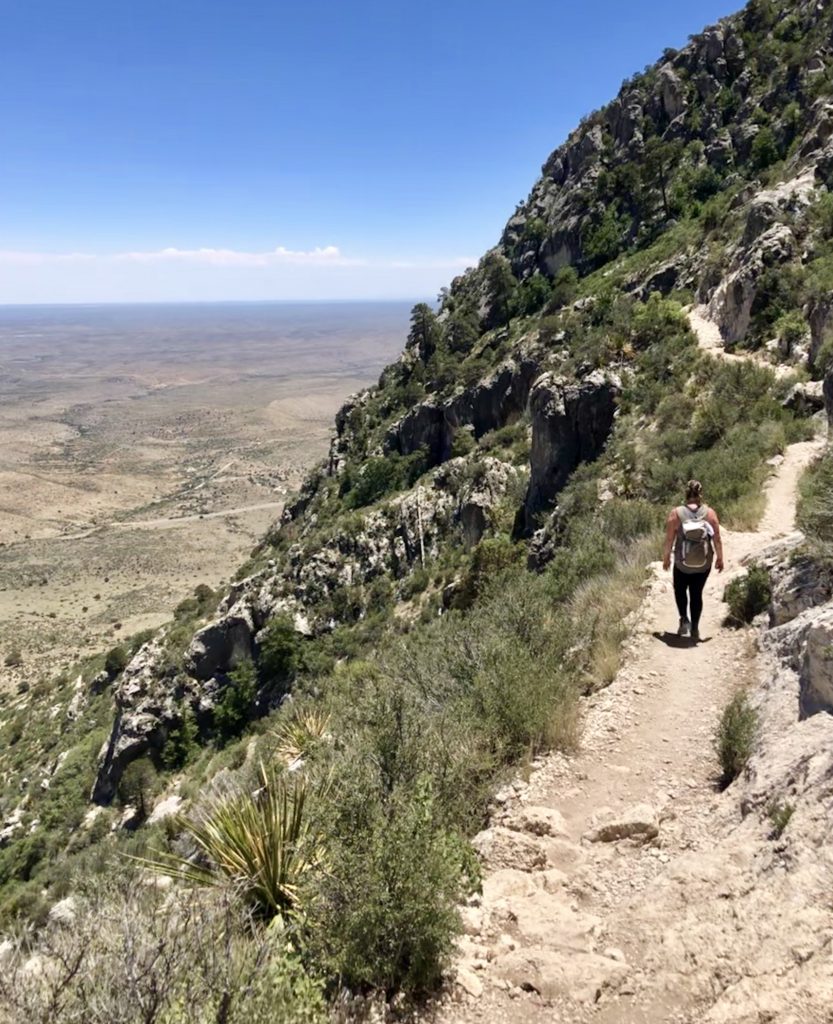
When I first stumbled upon highpointing, I felt a twinge of excitement run through my body. The formula speaks to my soul: my favorite outdoor activity (mountain climbing) and a childhood dream (visiting every state) all in the form of a checklist. Perfect.
There was just one slight problem – I’m already working on the goal of visiting every U.S. National Park. Woe is me.
Similar to the author of that Backpacker article, discovering this rare and exclusive club did not lead to some big revelation to begin life as a highpointer. Instead, I ripped out the map showing each state highpoint and filed it away. If I happen to find myself near one throughout our travels, what harm would reaching the summit be?
So weeks later we set off on a road trip throughout the American Southwest, which included a stop at Guadalupe Mountains National Park, home to the highest point in the state of Texas. The sense of anticipation returned. I wondered if this was about to be the inception of a new travel objective; a secondary journey alongside our national park goal. The Robin to our Batman.
By all appearances, the stars were aligning. A highpoint within a national park – that’s one of those two birds, one stone type of things.
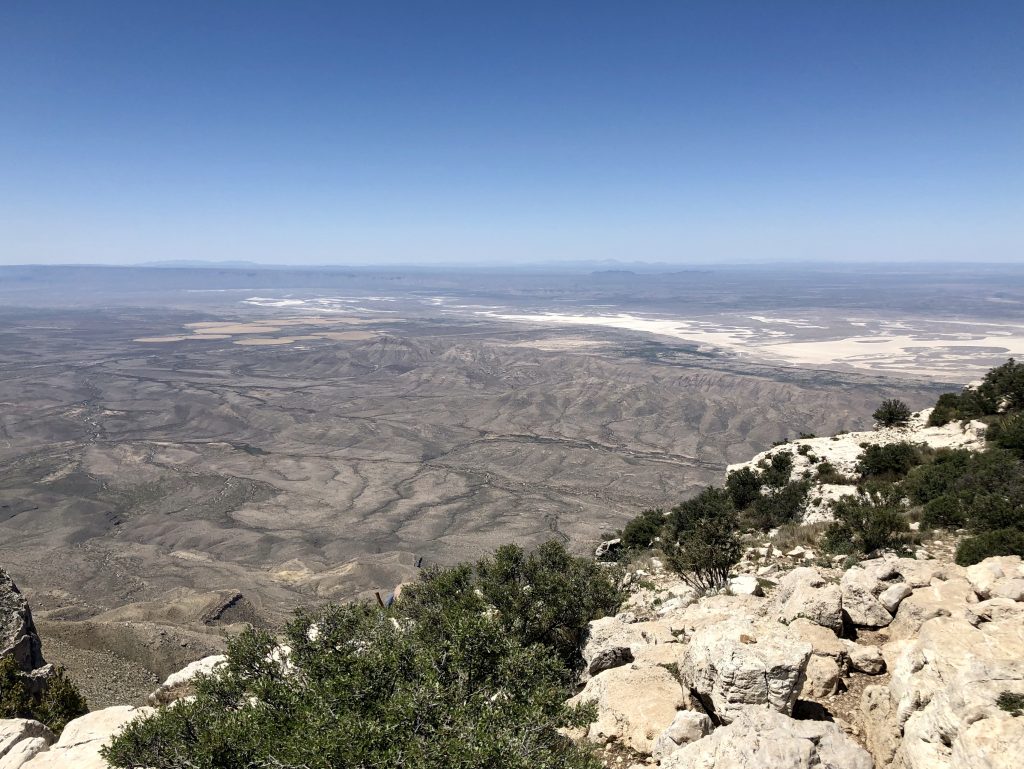
As you approach Guadalupe Mountains National Park, the first thing you notice is that the area doesn’t look much like Texas at all. Towering rock walls dominate the otherwise featureless surroundings. While not as dramatic as the Tetons or imposing as Mount Rainier, the Guadalupe Mountains are a formidable opponent for the uninitiated.
The bout begins the moment you enter park boundaries. Like most things in life, it becomes quickly apparent that nothing is going to come easy. Take lodging: options are limited to 20 primitive first-come, first-served campsites. You won’t find a roof to sleep under or a warm shower anywhere nearby. If we’ve learned anything from visiting 25 national parks, it’s that “first-come, first-served” essentially means “better luck next time.”
So it was with absolute no surprise that the campground was full. There are 9 additional campsites on the unfrequented north side of the park, but due to no through roads, you would have to take the nearly 3 hour scenic route to get there. Our backup plan meant setting up camp at the Whites City RV Park, conveniently located near the neighboring Carlsbad Caverns National Park. Like they probably say in Texas: this ain’t my first rodeo.
About that lack of roads part. Once you reach the Pines Springs Visitor Center, that’s as far as the blacktop will take you. You won’t find a scenic drive that hits all the viewpoints. Hiking boots are required.
“Roads? Where we’re going, we don’t need roads.”
Doc Brown
If Guadalupe Mountains is bothered by being one of the least visited national parks in the country you wouldn’t know it. In fact, the park seems to embrace its underdog status.
Seemingly on purpose, it’s one of the least accessible national parks. As this New York Times author was told, “This isn’t a theme park; it’s a wilderness park.”
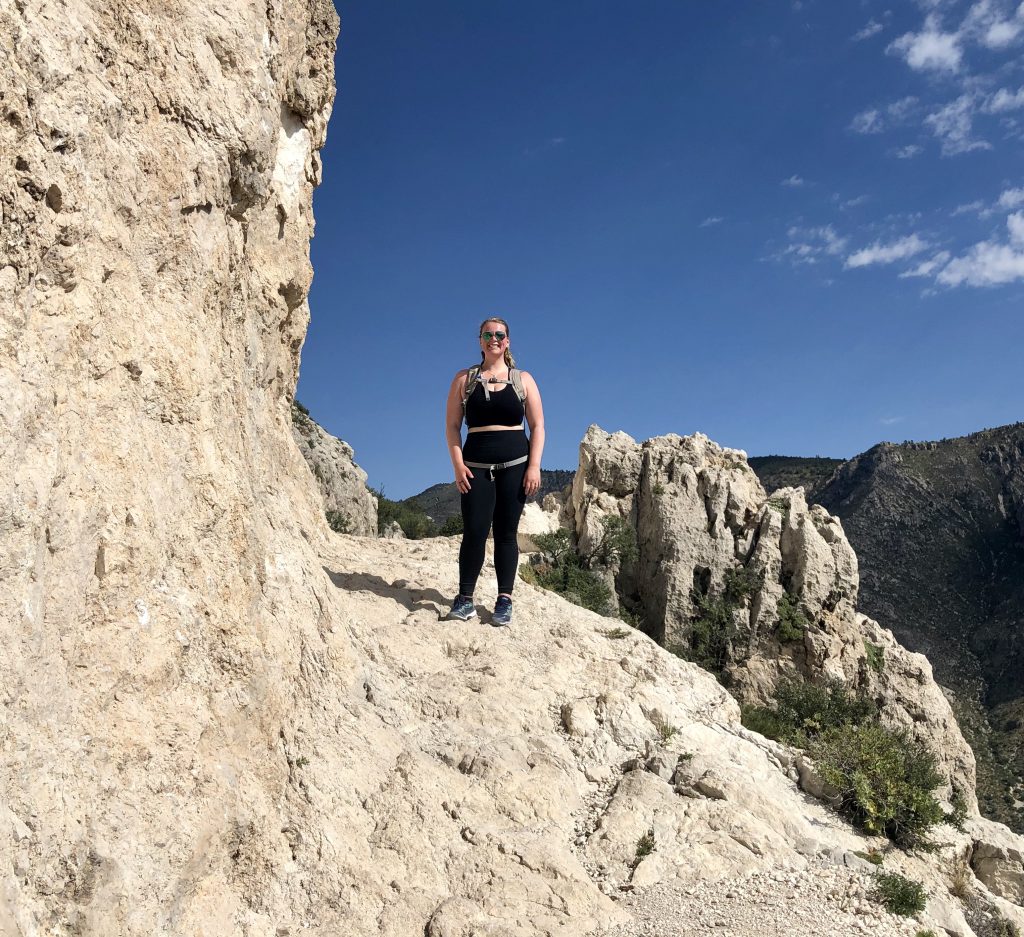
With your hiking boots laced up and your camping options figured out, it’s time to hit the trails. From hour long strolls to multi-day backpacking treks, Guadalupe Mountains has something for everyone. Our hiking style can accurately be summed up as ambitious day hikers. So with that in mind, here are the 3 best hikes in Guadalupe Mountains National Park:
Guadalupe Peak
Reasons to climb Guadalupe Peak: it’s the highest point in the state of Texas, the trail leads hikers through several different park ecosystems, and it’s the highest point in Texas.
Reasons to choose a different adventure in the park: the trail has all the ingredients of a frustrating hike. A brutally steep initial section, a false summit, and views from the top that are mediocre at best.
You might scoff at the idea that hiking a mountain in Texas, even its highest, would be classified as strenuous. In my arrogance, I did. At 8.4 roundtrip miles and 3,000 feet of elevation gain, the hike is equivalent to a Colorado 14er and equally as arduous.
As Amanda so eloquently put it, “The only high point of this hike is that it’s the highest point.”
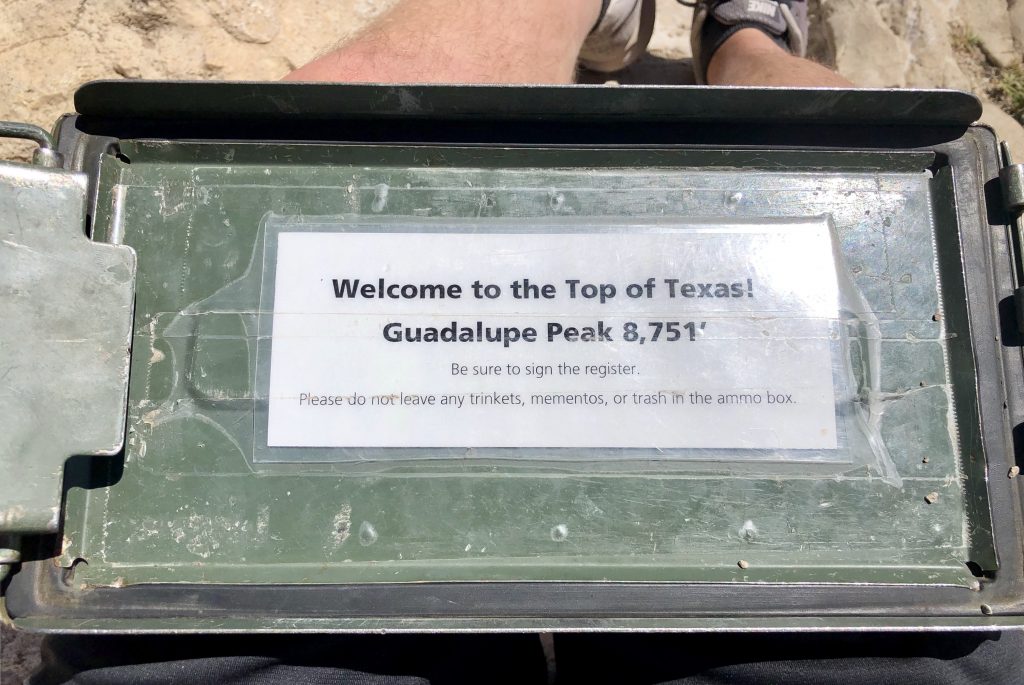
McKittrick Canyon
Named by Outside as the best hike in Guadalupe National Park, and, in a separate article, the best hike in Texas. A worthwhile hike in any month, McKittrick Canyon is a game-changer in the fall, when the colors change and the canyon is painted with shades of reds, oranges, and yellows.
Hardcore backpackers can continue through the canyon until reaching McKittrick Ridge. At 15 miles roundtrip and 2,700 ft of elevation gain, calling this one a day hike might be pushing it. That is likely why a backcountry campground is conveniently located on the ridge.
The Bowl
If the idea of checking something off a bucket list makes you want to punch a hole in the wall, skip Guadalupe Peak and optimize for views on this 9.1 mile hike. A favorite route among park rangers, the Bowl Trail takes you through a beautiful coniferous forest before opening up to stunning views of the park’s highlights.
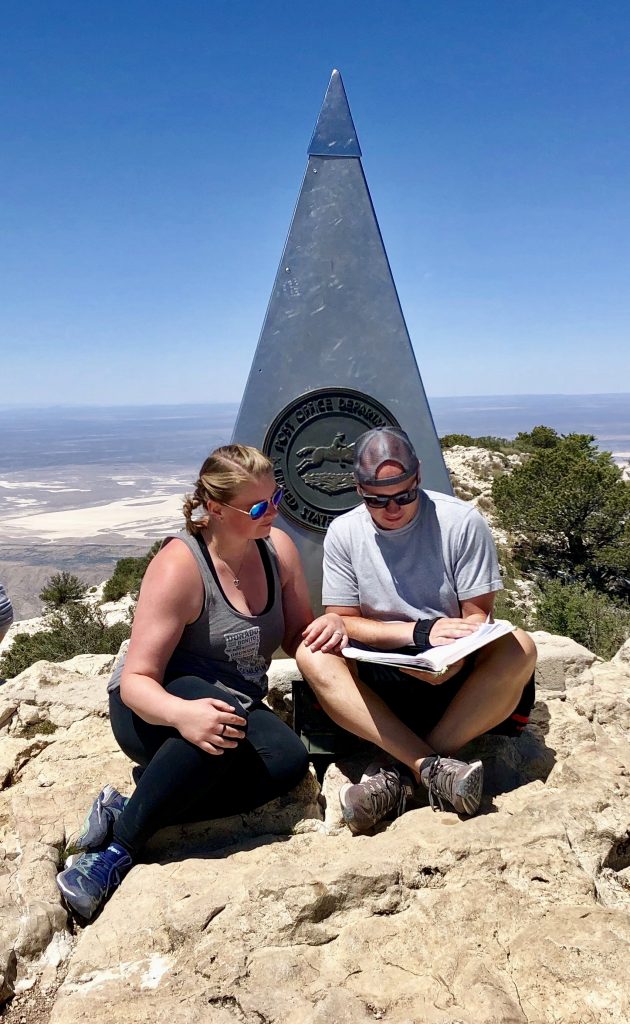
From the moment you land on the webpage for Guadalupe Mountains National Park it’s apparent what the park is most proud of – its wilderness.
If Texas wants to “Keep Austin Weird,” it certainly wants to “Keep Guadalupe Wild.”
“A wilderness, in contrast with those areas where man and his own works dominate the landscape, is hereby recognized as an area where the earth and its community of life are untrammeled by man, where man himself is a visitor who does not remain.”
Wilderness Act of 1964
As someone who always wanted to travel but kept falling back into the routine we call life, there is a specific moment I can point to that changed my whole trajectory. Call it a revelation, or if we’re being trendy, a travel hack.
That moment was during trip to Moab, Utah. More specifically, on the drive home from Moab. After being blown away by the two neighboring national parks, Amanda and I made it a goal to visit every U.S. National Park. Quickly, I found that it not only helped create a roadmap for future travel, but also a sense of urgency.
If you’re someone who wants to travel more but you don’t know where to start, try finding a thing – a travel goal, a list, a travel purpose – that gets you excited. Some people want to visit every state in the country, some every country in the world.
Our thing is to visit every national park in the United States.
Perhaps yours is highpointing?
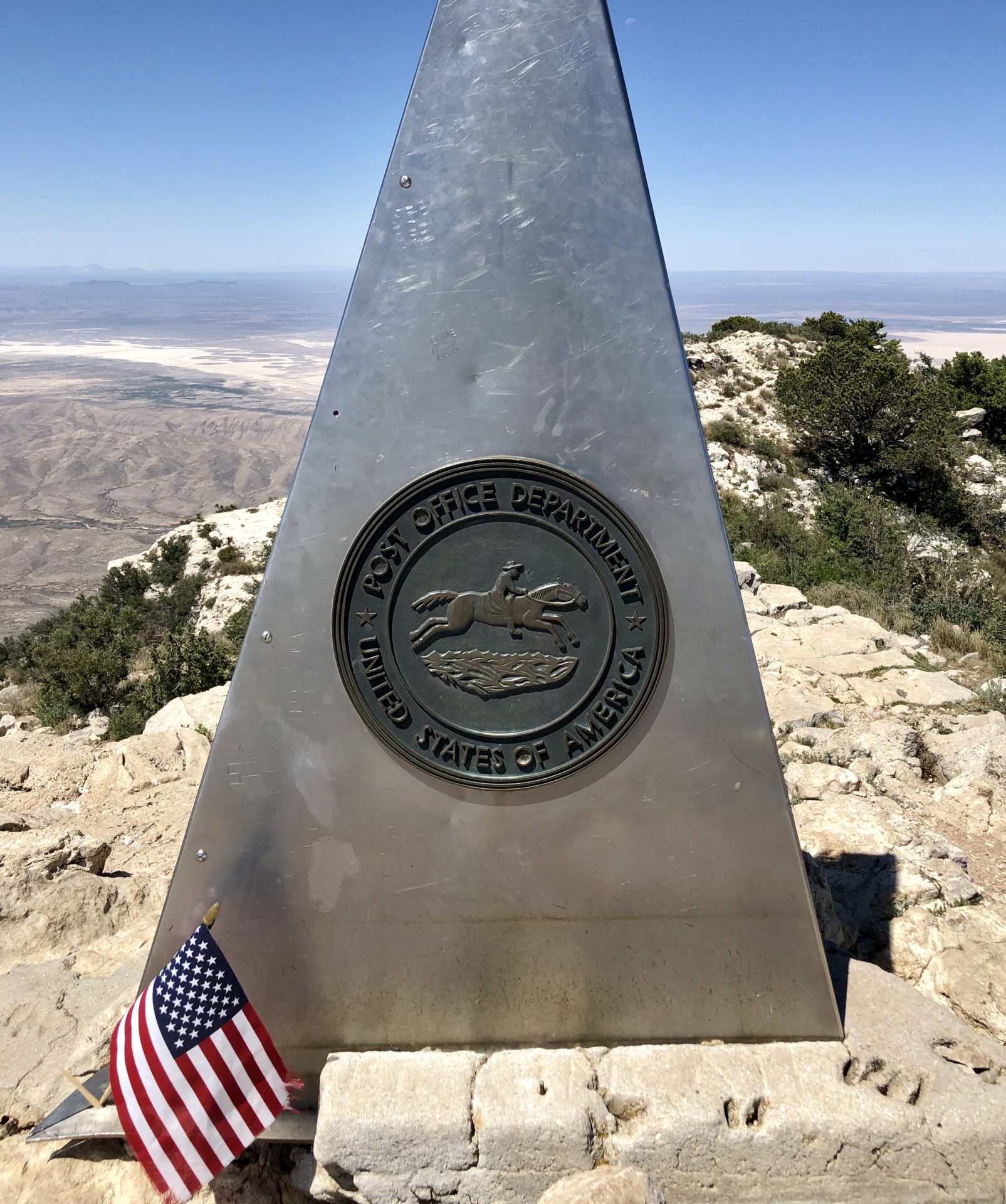
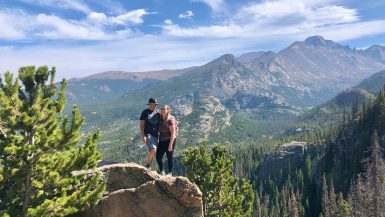
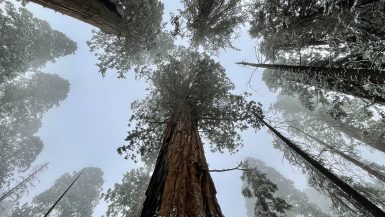
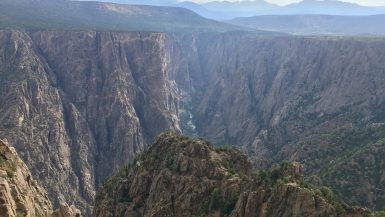
Leave a reply